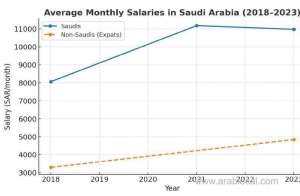Peak seasons can be both exciting and overwhelming for Amazon sellers. The holiday rush and back-to-school season can cause sales to skyrocket, but the challenges can double as well.
More shoppers mean more customer inquiries and order potential issues like stockouts or delays. You must also keep up with Amazon’s performance metrics to avoid penalties.
Competition also heats up, and supplier prices may fluctuate during busy seasons. If you fail to plan, you can risk losing revenue and getting bad reviews.
Peak seasons aren’t just about selling more. After learninghow to start Amazon in Saudi Arabia, you should know the tips and strategies for maximizing sales during peak periods to stay efficient and competitive.
How to Manage Peak Season Sales
Stay on top of peak periods and maximize your sales on Amazon with these tips and strategies:
1.Create your own high-season calendar.
A seasonal sales calendar can help you plan for the busy seasons and ensure you have the right inventory in stock.
Identify the major holidays and events your products are associated with. For instance, if you sell chocolates, include Valentine’s Day on your calendar. If you have a store for perfumes and essential oils, add Eid.
Next, create a timeline for the important holidays and events you have noted. Specify the dates you should start checking and preparing your stock and offering discounts and deals.
The timeline also helps you schedule your ad campaigns, social media posts, and other marketing strategies in advance.
A seasonal sales calendar can help you stay ahead of the rush, keep customers happy, and maximize profits without the last-minute stress.
2.Ensure you have enough stock for surges in sales.
Conduct a thorough inventory check to ensure you have enough products to meet additional demands. Replenish any popular items that are low in stock immediately.
Use your inventory system software to keep an eye on your stock. Also, pay attention to any alerts you receive regarding low quantity levels.
Also, check which products come with lower inbound limits set by FBA or those that may not be inbounded in time for the peak period. You can deal with this problem by using FBM or third-party fulfillment to stock these items.
If you want more accurate inventory forecasts and placement, check the data from your previous sales to identify key geographical areas where your products are delivered. You can then store your stock in warehouses in or near these places.
3.Optimize your product listings.
Applying search engine optimization (SEO) strategies to your product listings can help you maximize sales during peak seasons.
Start by researching high-performing keywords relevant to the holiday or event. For instance, add the words Eid, Eid al-Fitr or Eid al-Adha if you are targeting these holidays to your product titles, descriptions, and page headers when possible.
However, make sure the keywords do not appear forced in the content, especially in the titles. They need to be incorporated in a natural way to attract online shoppers.
Identify the latest high-ranking keywords relevant to your products and include them in your listings to optimize them. Ensure all images are clear, high-quality, and optimized for search engines as well.
4.Implement a competitive pricing strategy.
Prices fluctuate during high-traffic shopping periods like Black Friday and holiday sales. However, this doesn’t mean you must offer the lowest prices; you should focus on giving shoppers the best value.
Monitor competitor prices and use Amazon’s automated repricing options or other similar external tools to adjust prices in real time based on prevalent rates. You can also use these features to increase or reduce them according to market demands.
Implement value-based pricing if you sell print-on-demand (POD) products. You can offer higher prices on these since they are customizable and appeal to shoppers willing to pay more for unique or exclusive items.
You can also attract more customers by using some simple pricing tactics, such as setting prices to end in .99 or promoting discounts as percentage savings.
A strong pricing strategy also helps with visibility since Amazon’s algorithm favors competitively priced products. This can improve your chances of landing in the coveted Buy Box, which can further increase your sales.
5.Offer exclusive deals and coupons.
While reviewing your pricing strategy, consider the best deals and discounts you can offer that will still help you earn profits.
Deals and coupons usually lead to more impulse buys because they allow customers to get more value for their money. Offering both during peak seasons makes it easier to tap into the shoppers’ desire to hunt for bargains and create a sense of urgency, which can help you get more sales.
Bundles or bonus packs, limited-time discounts, and discounts on themed collections are some of the deals you can consider. Buy-one-get-one and free shipping offers are also popular on Amazon.
These deals can make your listing more attractive without losing profits.
6.Promote your products and deals.
Although you can expect an influx of sales during peak seasons, you can get more by promoting your products and deals.
During yourAmazon KSA seller registration, you may have come across the platform's advertising tools and features. Use them to reach more shoppers during the busy seasons.
Use Sponsored Product ads to promote individual product listings and make them more visible on search results.
Another option is to use Sponsored Brands to showcase your branded product lineup for the holiday or event.
If you want to reach more customers on Amazon and search engines, invest in Sponsored Display ads.
If you opted for Sponsored Brands, consider creating a separate deal page on your Amazon storefront. This strategy lets you showcase more in-demand products in one place, making it easier for your customers to find what they are looking for.
You can also leverage Amazon Lightning Deals and Best Deals to offer short-term discounts that help ensure your products stay visible during high-traffic times.
Remember to use social media to promote your seasonal offerings. You can share posts of your products and deals on Facebook, Instagram, TikTok, and other sites for free, so include them in your marketing strategy.
Be creative with and optimize your posts to create buzz around your products and generate more traffic to your Amazon store.
During the busiest times of the year, get more sales on Amazon with these tips and strategies.







